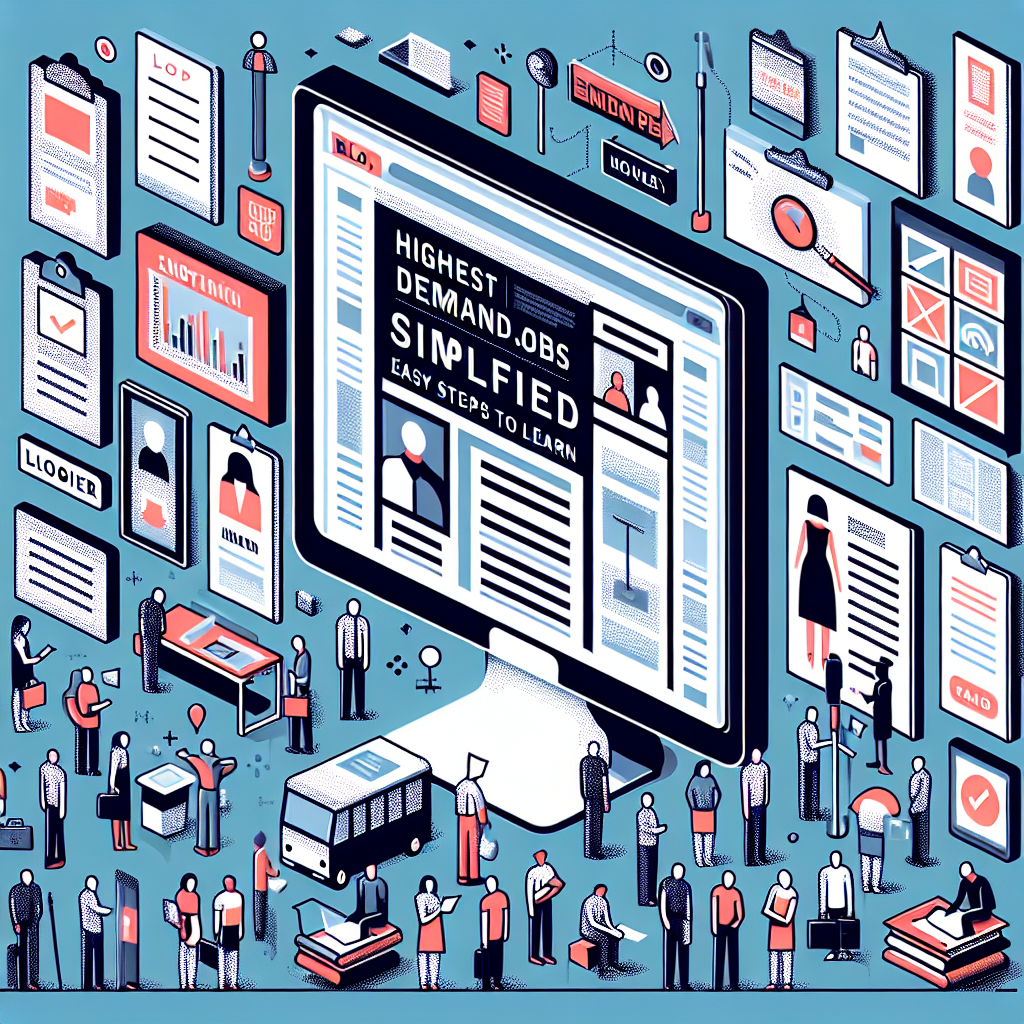If you want a quick, practical roadmap to get into careers with strong hiring prospects, this post will help. Highest Demand Jobs Simplified: Easy Steps To Learn is a compact playbook that breaks down how to identify in-demand roles, what skills matter, and the fastest ways to become job-ready without getting overwhelmed.
Highest-Demand Jobs Made Simple: a quick overview
Demand for workers shifts with technology, demographics, and economic trends. Health care, technology, skilled trades, and green energy are commonly cited sectors with steady openings. Instead of memorizing long lists, focus on transferable skills—digital literacy, communication, problem solving, and domain-specific tools—and pair them with targeted credentialing or hands-on experience.
Why focusing on demand matters
Pursuing high-demand jobs improves your chances of employment, wage growth, and career mobility. Employers in fast-growing fields often offer on-the-job training, apprenticeships, and tuition assistance. Understanding which roles employers actually hire for helps you prioritize learning that converts into interviews and offers.
How to choose which path to take
Start by answering three questions: What are the fastest-growing occupations in your region? Which jobs match your interests and strengths? What training or credentials do employers require? Use credible labor-market data to spot trends, then map routes from your current skillset to the role.
Steps to follow
- Research: Identify growth sectors and job titles that match your goals.
- Skill gap analysis: List required skills and compare them to your current abilities.
- Choose a learning path: certificate, bootcamp, community college course, apprenticeship, or self-study.
- Gain practical experience: internships, volunteer projects, gig work, or simulated projects.
- Apply strategically: tailor your resume and interview stories to show relevant outcomes and tools.
Fast ways to learn and get traction
Not every role requires a four-year degree. Many employers hire candidates with certificates, industry certifications, or demonstrable project work. Here are efficient learning routes:
- Short-term certificates and microcredentials for specific tools (e.g., cloud platforms, data analysis).
- Online courses and bootcamps that emphasize project portfolios.
- Apprenticeships and trade programs that combine paid work with instruction.
- Volunteer and freelance gigs to gather real examples to show during interviews.
Certifications that often matter
Certifications signal competence quickly. Examples include IT certifications, HVAC licensures, certified nursing assistant (CNA) credentials, commercial driver’s licenses, and project management certificates. Choose those recognized by employers in your target industry.
Where to find job openings and apply smartly
Use a mix of direct employer sites, industry-specific job boards, and broader platforms. For college students and recent grads, specialized listings and campus resources can be especially helpful—see this guide to job boards for college students in the USA for a useful starting point. Networking with alumni, attending industry meetups, and reaching out to recruiters on professional networks often surfaces unadvertised roles.
What to include in applications
Focus on measurable impact. Replace generic duties with outcomes: “reduced processing time by 30%,” “built an automated dashboard used by five teams,” or “completed a client project under budget.” If you lack paid experience, highlight volunteer projects, class assignments, or personal projects that used the same tools and processes.
Keep learning once you’re hired
Many high-demand careers require ongoing learning. Negotiate access to training, set up a 6–12 month skill plan, and build a portfolio of accomplishments. Continuous improvement keeps you competitive and opens doors to promotion and specialization.
Use reliable labor-market data
To validate your choices, consult authoritative sources on occupational growth and wages. The U.S. Bureau of Labor Statistics maintains a regularly updated overview of the fastest-growing occupations, which helps identify sectors with sustained demand and good pay prospects: Bureau of Labor Statistics’ list of fastest-growing occupations.
Quick checklist
- Identify 2–3 target roles and their required skills.
- Pick one fast, affordable credential or project to demonstrate competence.
- Build a short portfolio and tailor applications to each employer.
- Use job boards, campus resources, and networking to uncover openings.
FAQ
Q: How long does it take to become job-ready for high-demand roles?
A: It varies—some certifications and bootcamps take weeks to months, apprenticeships and degrees take longer. With focused effort, many people qualify for entry-level roles in 3–9 months using targeted certificates and project work.
Q: Are online courses enough to get hired?
A: Online courses can be sufficient when combined with hands-on projects, a clear portfolio, and evidence of applied skills. Employers care more about what you can do than where you learned it.
Q: How can I switch fields without starting over?
A: Identify transferable skills, get a targeted credential, and pursue projects that show the new skills in context. Networking and informational interviews help you learn employer expectations and find bridge roles that value your background.



